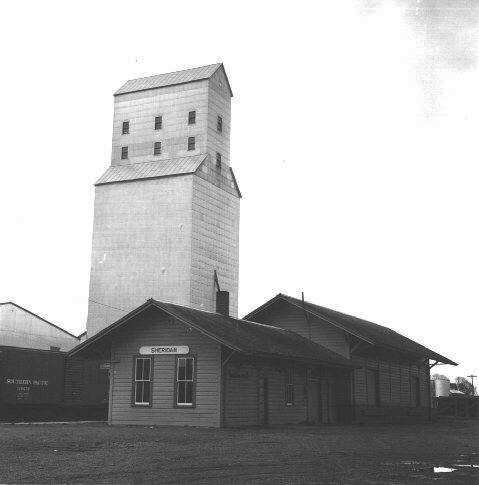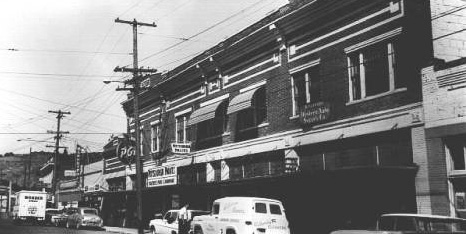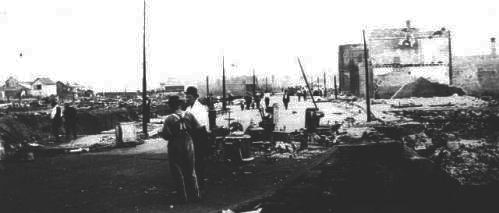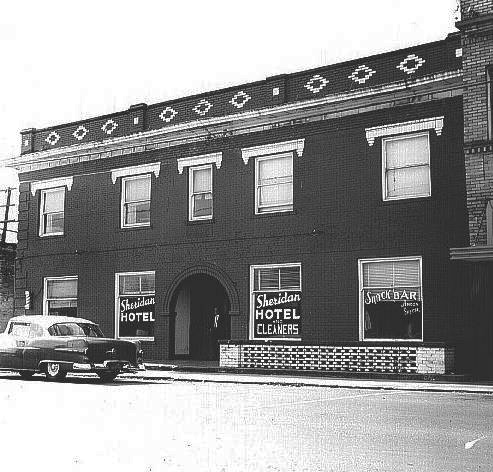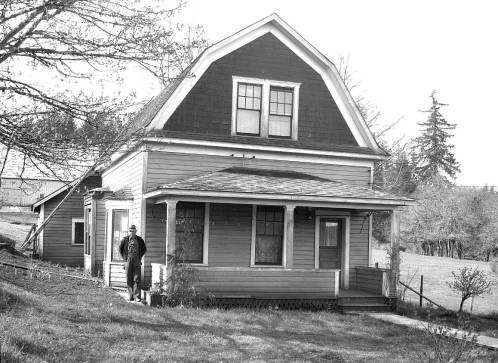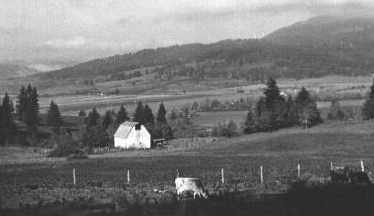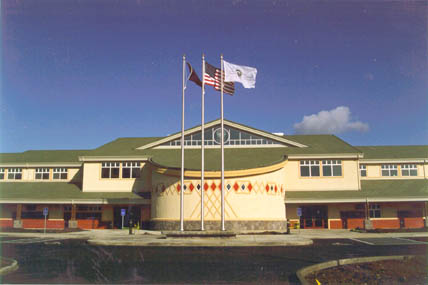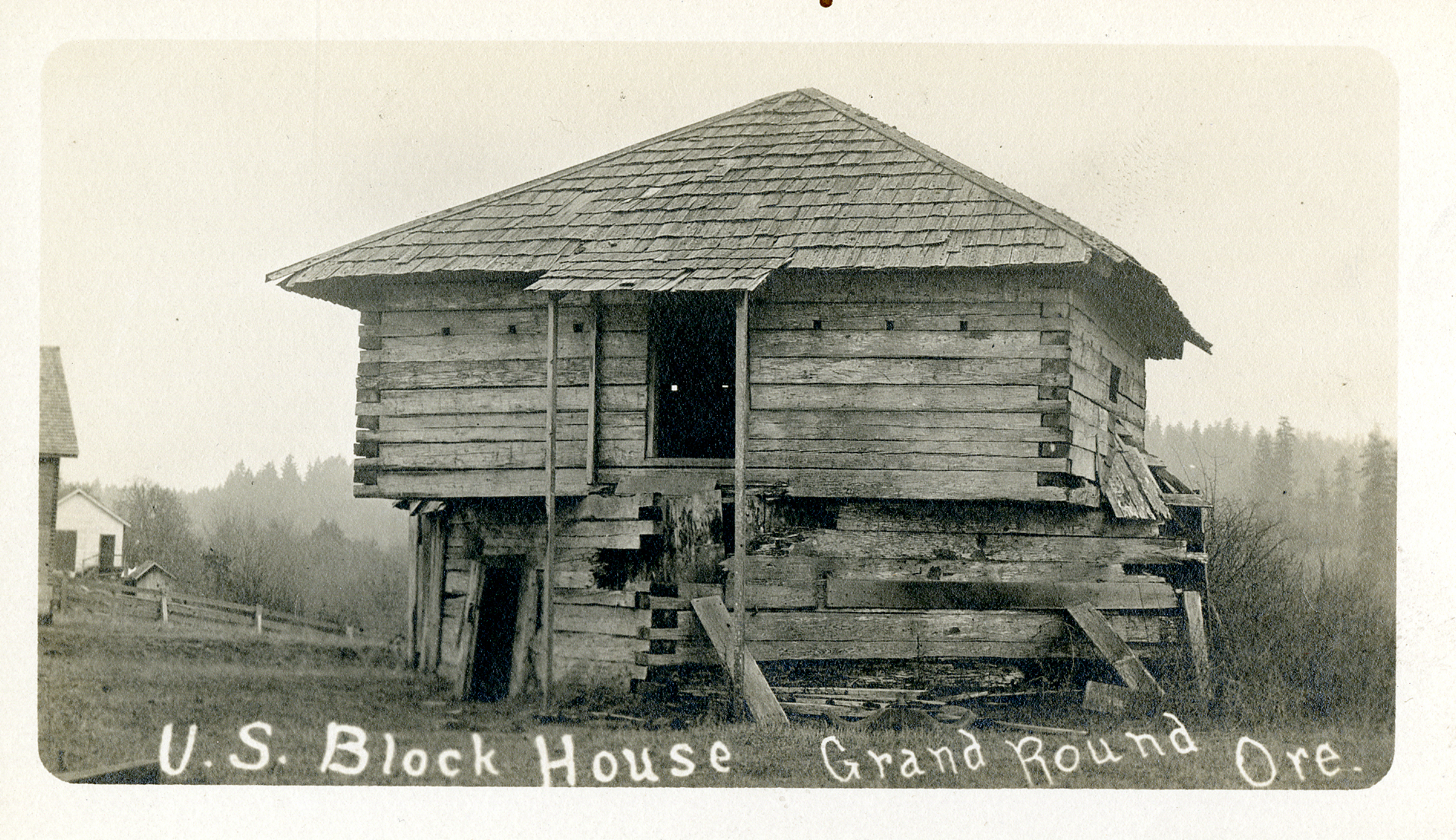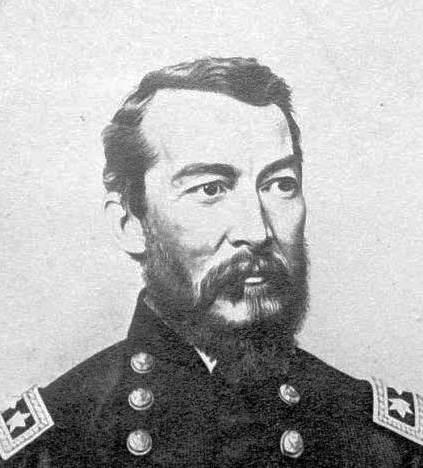The South Yamhill River divides the city of Sheridan, a town of about 4,640 people in Yamhill County. In 1847, Absolom “Ab” Faulconer settled on the north side of the river, and his relatives, William Chapman and the Graves family, settled on the south. A few years later, someone nailed a can to a post on the Faulconer land so people could receive messages and pick up their infrequent mail. It was the beginning of the town.
By 1852, Ab Faulconer’s brother Thomas was running a general store on his brother's Donation Land Claim. He opened a livery stable, with Ab's farmhouse serving as a hotel of sorts. From 1856 to 1861, Lt. Philip Sheridan, who was stationed at Fort Yamhill on the edge of the Grand Ronde Indian Reservation, was a frequent visitor of the Faulconers.
A much-needed bridge connecting the north to the south side of the river was constructed in 1865. The next year, Ab Faulconer platted and recorded a townsite on portions of the family's original Donation Land Claims. He named the town Sheridan to honor Philip Sheridan, who by then was a general. The official post office was moved from nearby Willamina to Sheridan. Willamina had a larger population, but Faulconer had considerable influence in Salem government circles. Thomas Faulconer was named the first postmaster.
Sheridan has survived four major fires in its business districts, the worst in 1913 when an entire section on the south side of town was destroyed. In each instance, rebuilding began immediately, making the structures stronger and safer.
With the fertile soil and mild climate of the south Yamhill River Valley, Sheridan has been a rich agricultural area since Faulconer first set plow to earth. Farming, dairies, and the timber industry kept the community economically sound for decades. When the timber industry faltered in the late 1980s, the community diversified, welcoming an artist community and becoming the first location in Oregon to have a federal prison. The Federal Correctional Institution, Sheridan, built at the edge of town, houses approximately 1,600 medium-security inmates.
-
![Sheridan railroad station, March 1959.]()
Sheridan, Railroad Depot, March 1959.
Sheridan railroad station, March 1959. Photo Ben Maxwell, Salem (Oregon) Public Library Historic Photo Collec., 4032
-
![Bridge Street at Sheridan, Aug. 1961]()
Sheridan, Bridge St., Aug 1961.
Bridge Street at Sheridan, Aug. 1961 Photo Ben Maxwell, Salem (Oregon) Public Library Historic Photo Collec., 6852
-
![Aftermath of fire in Sheridan, July 18, 1913.]()
Sheridan, fire aftermath, July 1913.
Aftermath of fire in Sheridan, July 18, 1913. Photo Ben Maxwell, Salem (Oregon) Public Library Historic Photo Collec., 6850
-
![Sheridan Hotel, Oct. 1961]()
Sheridan, Sheridan Hotel, Oct 1961.
Sheridan Hotel, Oct. 1961 Photo Ben Maxwell, Salem (Oregon) Public Library Historic Photo Collec., 6851
-
![General Philip Sheridan's home near Fort Hill, 1946.]()
Sheridan, former home of Philip Sheridan, 1946.
General Philip Sheridan's home near Fort Hill, 1946. Photo Ben Maxwell, Salem (Oregon) Public Library Historic Photo Collec., 8227
-
![General Philip Sheridan's home near Fort Hill, Feb. 1958.]()
Sheridan, former home of Philip Sheridan, 1958.
General Philip Sheridan's home near Fort Hill, Feb. 1958. Photo Ben Maxwell, Salem (Oregon) Public Library Historic Photo Collec., 8227A
Related Entries
-
![Confederated Tribes of Grand Ronde]()
Confederated Tribes of Grand Ronde
The Confederated Tribes of Grand Ronde Community of Oregon is a confede…
-
![Fort Yamhill Blockhouse]()
Fort Yamhill Blockhouse
The Fort Yamhill Blockhouse is one of the few architectural remnants fr…
-
![Philip Henry Sheridan (1831-1888)]()
Philip Henry Sheridan (1831-1888)
Before he gained fame as commander of the cavalry forces of the Army of…
-
![Willamina (city)]()
Willamina (city)
Willamina, located in the northwestern Willamette Valley, is in both Ya…
Map This on the Oregon History WayFinder
The Oregon History Wayfinder is an interactive map that identifies significant places, people, and events in Oregon history.
Further Reading
Bancroft, Hubert Howe and Frances Fuller Barrett Victor. History of Oregon, 1848-1888. Whitefish, MT: Kessinger Publishing, 2007. First published 1888 by History Company.
Gaston, Joseph. The Centennial History of Oregon. Portland: S.J. Clarke Pub. Co, 1912.

